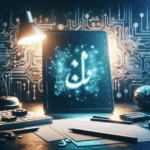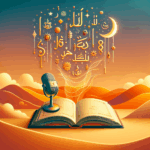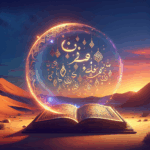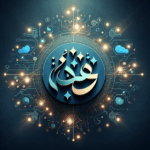Visual Storytelling with the Arabic Alphabet: An Artistic Journey
Have you ever gazed at the swirling, intricate forms of Arabic calligraphy and felt a story being whispered to you? 🌟 Visual storytelling with the Arabic alphabet is not only an artistic expression but a cultural journey that connects us to rich histories and vibrant traditions. Let’s dive into this mesmerizing world and discover how each letter can tell a thousand tales.
Table of Contents
1. Introduction to Arabic Calligraphy
2. The Art of Visual Storytelling
3. Techniques in Arabic Calligraphy
4. Cultural Significance and Modern Adaptations
5. Conclusion
6. FAQs
Introduction to Arabic Calligraphy
The Arabic alphabet is more than just a script; it’s a tapestry woven with centuries of culture and spirituality. Originating in the 4th century, Arabic calligraphy has been an essential medium for artistic expression in the Islamic world. Each letter, with its unique curves and dots, offers endless possibilities for storytelling. Whether inscribed on ancient manuscripts or modern art pieces, this art form continues to captivate audiences worldwide.
The Art of Visual Storytelling
Visual storytelling through the Arabic alphabet involves transforming simple letters into complex designs that evoke emotions and narratives. Artists use the flow and form of the script to convey messages and themes, from spiritual teachings to personal reflections. Imagine a single letter that morphs into a landscape or a phrase that dances across a canvas, each stroke holding a piece of the story. ✨
Techniques in Arabic Calligraphy
To master the art of visual storytelling with the Arabic alphabet, one must explore various calligraphic styles. Here are a few popular techniques:
Naskh
A more straightforward and readable script, Naskh is perfect for beginners. It is often used in print and is ideal for creating clear narratives.
Diwani
Characterized by its complexity and ornate style, Diwani is used for decorative purposes and is perfect for intricate artwork that tells a deeper story.
Thuluth
Known for its elegance, Thuluth is often used in architectural designs. Its graceful curves make it suitable for grand storytelling pieces that command attention. 🏛️
Cultural Significance and Modern Adaptations
Arabic calligraphy is deeply intertwined with cultural identity and religious significance. Historically used in religious texts, it has evolved to encompass modern themes and technologies. Today, artists blend traditional techniques with digital mediums, creating stunning pieces that resonate with contemporary audiences. From fashion to graphic design, the Arabic alphabet continues to inspire and innovate.
Conclusion
Visual storytelling with the Arabic alphabet is a timeless art that bridges the past and present. Whether you’re an artist, a language enthusiast, or someone curious about different cultures, exploring this art form offers a glimpse into a world where letters become living stories. So, next time you see a piece of Arabic calligraphy, take a moment to listen to the story it tells. 🎨
FAQs
Q1: What is the most popular style of Arabic calligraphy?
A1: Naskh is one of the most popular styles, especially for beginners, due to its readability and simplicity.
Q2: Can I learn Arabic calligraphy online?
A2: Yes, many online courses and tutorials can help you learn Arabic calligraphy from the comfort of your home.
Q3: How is Arabic calligraphy used in modern design?
A3: Arabic calligraphy is used in various modern applications, including digital art, branding, and fashion, often merging traditional techniques with contemporary styles.
Q4: Is Arabic calligraphy only used for religious texts?
A4: While historically significant in religious texts, Arabic calligraphy is now used in a wide range of artistic and commercial applications.
Q5: What tools are needed to start learning Arabic calligraphy?
A5: Basic tools include a calligraphy pen or reed pen, ink, and paper. As you advance, you might explore different types of pens and specialized papers.





